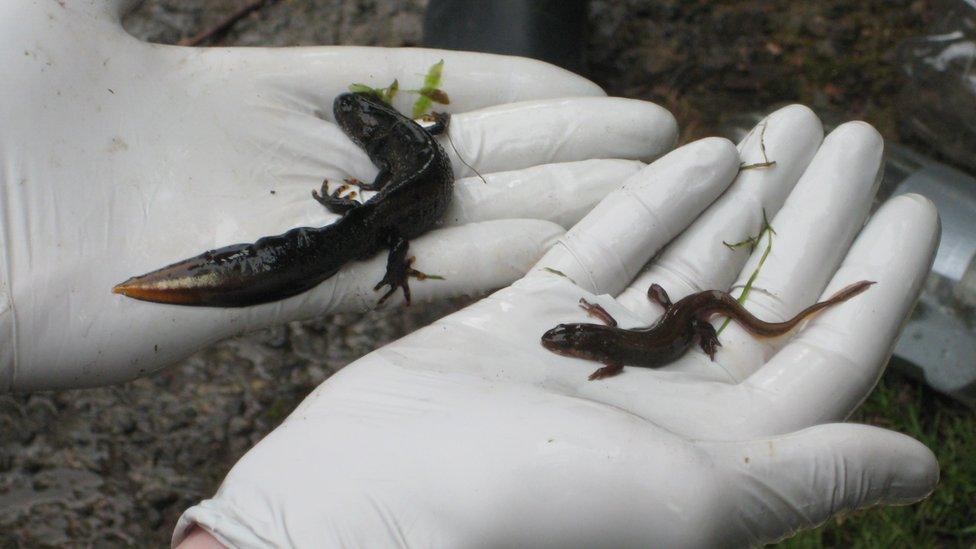Newts discovered in Coldingham broadband works
- Published

An engineer carrying out a survey ahead of broadband works has uncovered a family of great crested newts.
Steve Jones made the find when he lifted a manhole in Coldingham in the Scottish Borders.
The broadband network planner discovered the newts "living happily alongside the telephone cables".
An environmental consultancy was called in to help tackle the issue and the newts have now been safely removed to a "suitable pond".
The Openreach engineer immediately recognised the newts as a protected species and knew that to disturb, injure or kill them would have been against European law.
"A community of great crested newts was the last thing I expected to find," he said.
"Some of them had climbed onto the cables inside the hole.
"I recognised them because I was interested in amphibians and reptiles when I was young. So I took a photo and sent it to a friend, who confirmed what they were."
'Real conundrum'
He then got in touch with an environmental consultant for advice as well as the Amphibian and Reptile Conservation Trust (ARC).
"It's a new habitat in the area for great crested newts and the conservationists at ARC were really excited to hear they're spreading to this area," he said.
The environmental consultancy found seven great crested newts, five smooth and three palmate newts at the top of the manhole.
However, it was impossible to see if there were more because the manhole was full of water so it was carefully drained and checked.
"We recovered two more great crested newts, but the real conundrum is what they were doing there in the first place", said Mr Jones, who lives in Burgess Hill in West Sussex but surveys new broadband networks across the UK.

Environmental consultant Peter Leach, based in North Berwick, said the discovery was something of a surprise.
"This was really unusual - how these newts got into the manhole remains a complete mystery," he said.
"The access points around the manhole are either dry or blocked, so we may never know how they ended up here.
"The species isn't common in Scotland and weren't previously known to be present in this area. They need ponds for breeding and suitable habitat for feeding and hibernation."
'Tad unusual'
He said the most important thing had been to find a "safe new home" for the newts and working with ARC and the Scottish Borders Amphibian and Reptile Group one had been found nearby.
Sara Budge, programme director for Digital Scotland Superfast Broadband, said: "Finding these newts was a tad unusual - but all part of a day's work.
"It's good that thanks to Steve noticing the newts quickly, they've found a suitable 'newt' home, while we continue to progress with our deployment not only in the Scottish Borders but across Scotland."